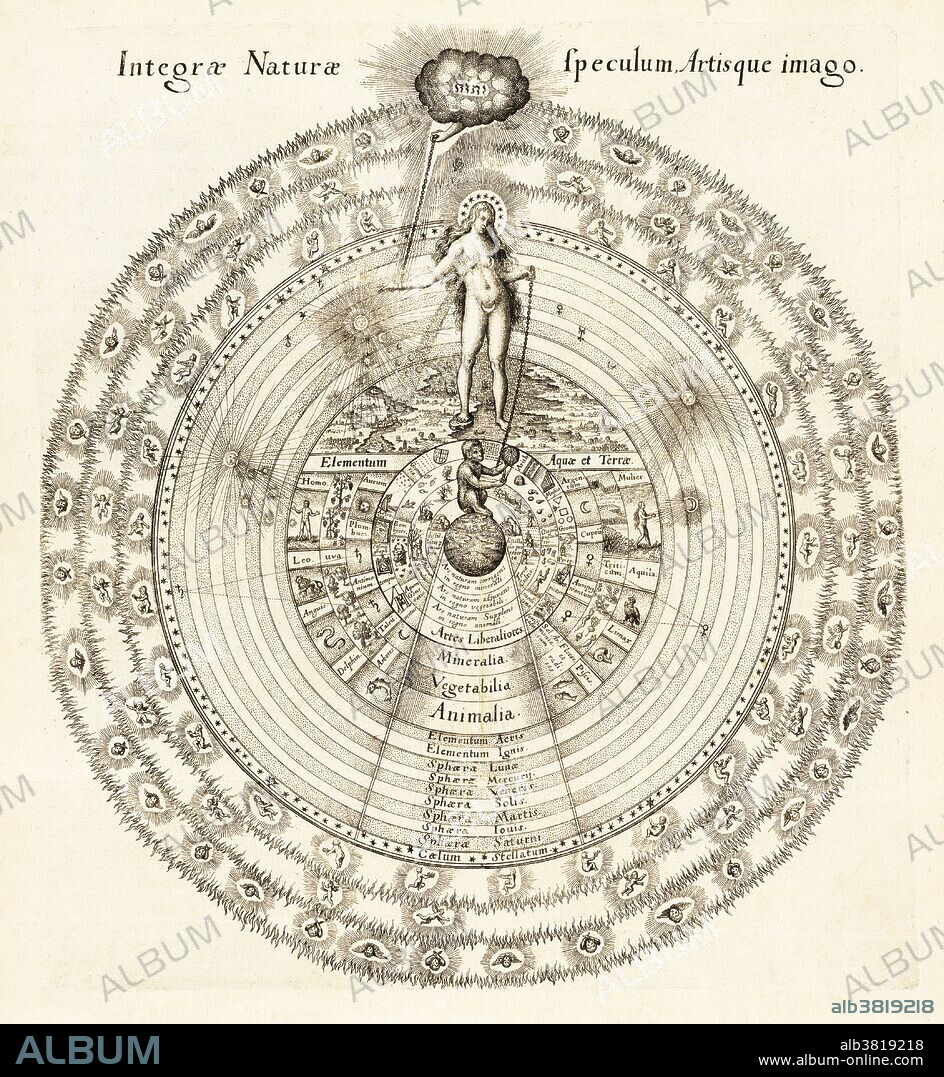alb3819218
Cosmology, Fludd's Integrae Naturae, 1617

|
Zu einem anderen Lightbox hinzufügen |
|
Zu einem anderen Lightbox hinzufügen |



Haben Sie bereits ein Konto? Anmelden
Sie haben kein Konto? Registrieren
Dieses Bild kaufen

Titel:
Cosmology, Fludd's Integrae Naturae, 1617
Untertitel:
Siehe automatische Übersetzung
Integrae Naturae, by Robert Fludd. During the 16th and 17th centuries, notions of macrocosm and microcosm were widely accepted. Many people believed that the same patterns found in the human body on a small scale (microcosm) are found in the natural universe as a whole (macrocosm). Here, a nude female figure representing the world's soul is chained on the right hand to God and on the left to a monkey representing man; astrological and alchemical symbols fill the inner circles, while the hierarchy of angels form outer circles. Robert Fludd, also known as Robertus de Fluctibus (1574-1637) was an English physician, astrologer, and mystic. His philosophy is presented in Utriusque Cosmi, Maioris scilicet et Minoris, metaphysica, physica, atque technica Historia (The metaphysical, physical, and technical history of the two worlds, namely the greater and the lesser), published in Germany between 1617 and 1621.
Bildnachweis:
Album / Science Source / Getty Research Institute
Freigaben (Releases):
Model: Nein - Eigentum: Nein
Rechtefragen?
Rechtefragen?
Bildgröße:
4152 x 4505 px | 53.5 MB
Druckgröße:
35.2 x 38.1 cm | 13.8 x 15.0 in (300 dpi)
Schlüsselwörter:
AKT (MALEREI) • ALCHEMIE • ASTROLOGIE • ENTBLÖSSUNG • ENTBLÖßT • FRONTISPIZ • ILLUSTRATION • ILLUSTRATIONS • KOSMOLOGIE • MANN • METAPHYSIK • NACKT (NACKTHEIT) • NACKT
 Pinterest
Pinterest Twitter
Twitter Facebook
Facebook Link kopieren
Link kopieren Email
Email
